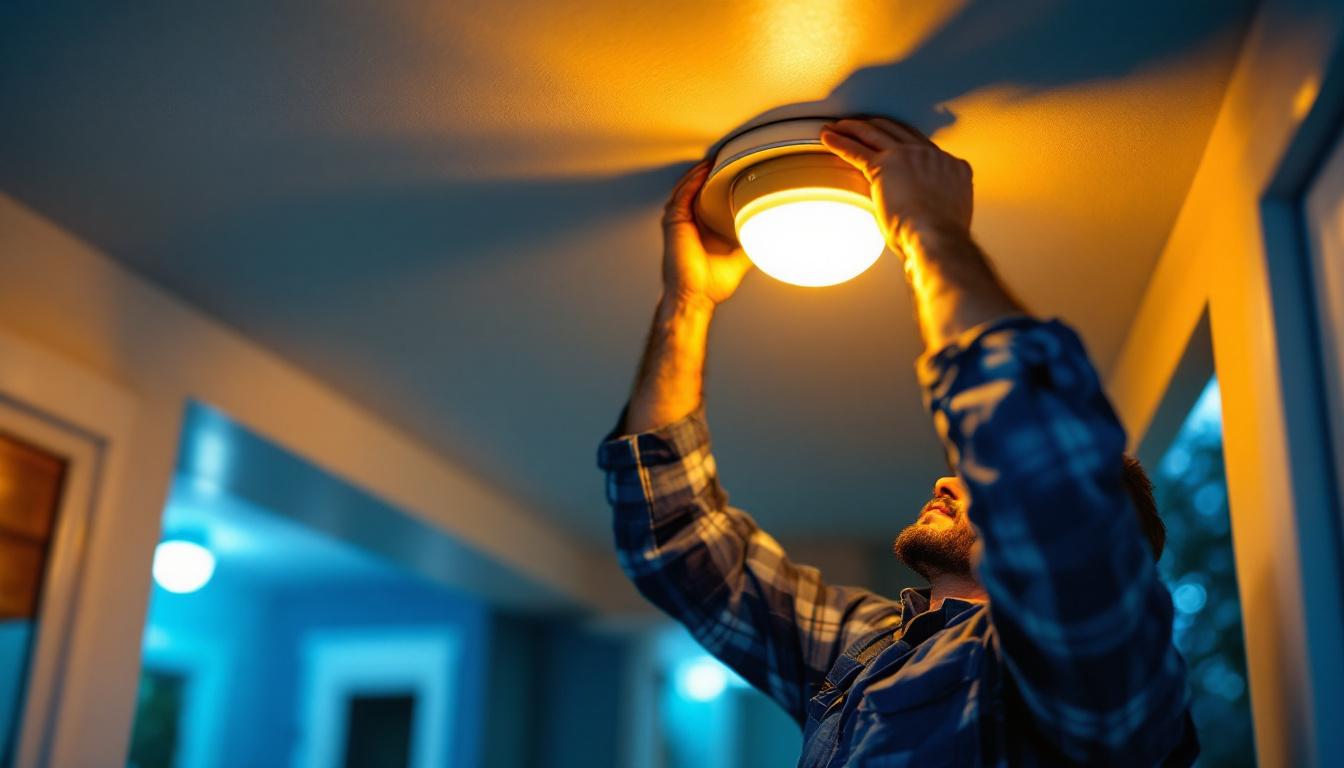
In the ever-evolving world of electrical installations, ceiling fans have emerged as a popular choice for both residential and commercial spaces. For lighting contractors, understanding the various parts of ceiling fans and their applications can significantly enhance service offerings and customer satisfaction. This article delves into the essential components of ceiling fans, their benefits, and how they can transform the business landscape for lighting contractors.
Ceiling fans consist of several key components, each playing a crucial role in their functionality. By familiarizing oneself with these parts, lighting contractors can better assist clients in selecting the right fan for their needs.
The motor is the heart of the ceiling fan, responsible for generating the airflow that cools or circulates air within a room. Understanding the different types of motors, such as AC and DC motors, is essential for contractors. AC motors are typically more common and less expensive, while DC motors are more energy-efficient and quieter, making them a preferred choice for high-end installations.
Contractors should also consider the power rating of the motor. A higher wattage generally indicates a more powerful fan that can move air more effectively. However, it’s crucial to match the motor’s capabilities with the size of the room to ensure optimal performance.
The blades of a ceiling fan are not just for aesthetics; they play a significant role in airflow efficiency. The material, shape, and pitch of the blades can greatly influence a fan’s performance. For instance, wooden blades tend to offer a classic look and can provide a warm ambiance, while plastic or metal blades are often more durable and easier to clean.
Contractors should advise clients on the ideal blade size based on the room dimensions. Generally, larger rooms require longer blades to circulate air effectively, while smaller rooms can benefit from compact designs. Additionally, the pitch of the blades—typically ranging from 12 to 15 degrees—affects the fan’s ability to move air, with steeper pitches generally providing better airflow.
Many ceiling fans come equipped with light kits, which can be a major selling point for clients looking to maximize their lighting options. Light kits can vary significantly in design and functionality, from integrated LED lights to traditional bulb sockets. Contractors should be knowledgeable about the different types of light kits available and how they can enhance the overall design of a room.
It’s also important to consider the compatibility of light kits with various fan models. Some fans are specifically designed to accommodate certain light kits, while others may require adapters. Ensuring compatibility can save time and reduce potential installation issues.
For lighting contractors, a comprehensive knowledge of ceiling fan parts can lead to numerous advantages. This expertise not only enhances service offerings but also fosters trust and credibility with clients.
When contractors can provide detailed information about ceiling fan components and their benefits, it leads to more informed decision-making for clients. This level of service can significantly enhance customer satisfaction, as clients feel more confident in their purchases.
Moreover, being able to explain the advantages of different motor types, blade designs, and light kits allows contractors to tailor their recommendations to the specific needs of each client. This personalized approach can lead to repeat business and referrals, ultimately boosting a contractor’s reputation in the industry.
Understanding ceiling fan parts can open up new sales opportunities for lighting contractors. By offering a wider range of ceiling fan options, including those with advanced features like remote controls or smart technology, contractors can cater to a broader audience.
Additionally, promoting energy-efficient models can attract environmentally conscious customers. With the growing emphasis on sustainability, highlighting the benefits of energy-efficient ceiling fans can be a compelling selling point, leading to increased sales and customer loyalty.
Knowledge of ceiling fan parts also translates into improved installation skills. Contractors who understand the intricacies of ceiling fan components are better equipped to handle complex installations and troubleshoot potential issues. This expertise can reduce installation time, minimize errors, and ultimately lead to higher profitability.
Furthermore, being proficient in ceiling fan installations can set contractors apart from competitors who may not offer this service. As more homeowners and businesses seek to enhance their spaces with ceiling fans, having the necessary skills can be a significant advantage.
Selecting the appropriate ceiling fan for a client involves considering several factors, including room size, style preferences, and specific needs. Lighting contractors play a pivotal role in guiding clients through this decision-making process.
The size and layout of a room are critical considerations when recommending a ceiling fan. For larger spaces, a fan with a greater blade span is essential to ensure adequate airflow. Conversely, smaller rooms may benefit from compact designs that do not overwhelm the space.
Contractors should also take into account the height of the ceiling. In rooms with high ceilings, a downrod may be necessary to ensure the fan is positioned at an optimal height for effective air circulation. Conversely, flush mount fans are ideal for rooms with lower ceilings, providing a sleek look while maintaining functionality.
Ceiling fans come in a variety of styles, from modern and sleek to traditional and ornate. Understanding a client’s aesthetic preferences is crucial for making the right recommendation. Contractors should take the time to discuss design elements that will complement the existing decor of a room.
Additionally, color and finish options can significantly impact a fan’s visual appeal. Whether a client prefers a classic wood finish or a contemporary metallic look, having a range of options available can enhance the overall customer experience.
Modern ceiling fans often come equipped with a range of special features that can enhance their functionality. For instance, remote controls and smart technology allow users to adjust fan speeds and light settings with ease. Contractors should be prepared to discuss these features and their benefits with clients, as they can be significant selling points.
Moreover, some fans offer reversible motors, allowing users to switch the direction of airflow based on the season. This feature can be particularly appealing to clients looking to maximize their energy efficiency throughout the year.
Proper installation is key to ensuring the longevity and functionality of ceiling fans. Lighting contractors should adhere to best practices to guarantee a successful installation process.
Before beginning any installation, safety should be the top priority. Contractors should always turn off the power supply at the circuit breaker to avoid electrical hazards. Additionally, using appropriate safety gear and tools can help prevent accidents during the installation process.
It is also essential to ensure that the ceiling fan is securely mounted to a ceiling joist or a fan-rated box. This step is crucial to prevent any wobbling or potential accidents once the fan is in operation.
Each ceiling fan model comes with specific installation instructions provided by the manufacturer. Contractors should always refer to these guidelines to ensure proper assembly and installation. Following the manufacturer’s recommendations can also help avoid warranty issues in the future.
Furthermore, being familiar with the specific parts and components of the fan can streamline the installation process. A thorough understanding of how each part fits together can reduce installation time and minimize errors.
After installation, it is essential to test the ceiling fan to ensure it operates correctly. Contractors should check for any unusual noises, wobbling, or issues with the light kit. Addressing these concerns promptly can enhance customer satisfaction and prevent potential callbacks.
In the event of any issues, contractors should be prepared to troubleshoot common problems. Understanding the basic mechanics of ceiling fans can help identify and resolve issues quickly, ensuring a smooth experience for clients.
The ceiling fan industry continues to evolve, with advancements in technology and design shaping the future of these essential fixtures. Lighting contractors who stay informed about emerging trends can position themselves for success in this competitive market.
As smart home technology becomes increasingly prevalent, ceiling fans are following suit. Many modern fans now offer compatibility with smart home systems, allowing users to control their fans via smartphone apps or voice commands. Lighting contractors should familiarize themselves with these technologies to meet the growing demand for smart ceiling fans.
Integrating smart technology not only enhances the user experience but also opens up new opportunities for contractors to offer value-added services. Providing clients with guidance on smart home integration can set contractors apart from competitors and position them as industry leaders.
With a growing emphasis on sustainability, energy-efficient ceiling fans are becoming increasingly popular. Contractors should stay informed about the latest energy-efficient models and their benefits. By promoting these options, contractors can appeal to environmentally conscious clients and contribute to a more sustainable future.
Additionally, understanding energy ratings and certifications can help contractors provide clients with accurate information about potential energy savings. This knowledge can be a significant selling point, especially for clients looking to reduce their energy bills.
As consumer preferences evolve, so do ceiling fan designs. Contractors should keep an eye on emerging trends in aesthetics and functionality. From minimalist designs to elaborate statement pieces, there is a wide range of options available to suit various tastes.
By staying updated on design innovations, lighting contractors can offer clients the latest styles and trends, ensuring their projects remain relevant and appealing. This adaptability can lead to increased customer satisfaction and loyalty.
In the competitive landscape of lighting contracting, understanding the various parts of ceiling fans can be a game-changer. By equipping themselves with knowledge about motors, blades, light kits, and installation techniques, contractors can enhance their service offerings and build lasting relationships with clients.
As the demand for ceiling fans continues to grow, staying informed about industry trends and innovations will be crucial for success. By embracing new technologies, promoting energy efficiency, and adapting to changing design preferences, lighting contractors can position themselves as trusted experts in the field.
Ultimately, investing time in understanding ceiling fan components and their applications can lead to improved customer service, increased sales opportunities, and enhanced installation skills. For lighting contractors, this knowledge is not just beneficial; it is essential for thriving in a dynamic and evolving market.
Ready to elevate your lighting contracting business with the industry’s best ceiling fan parts? Look no further than LumenWholesale, where we provide contractors with top-notch, spec-grade lighting products at unbeatable wholesale prices. Our extensive selection of ceiling fan components is designed to meet the highest industry standards, ensuring you deliver reliable and high-performance solutions to your clients. Take advantage of our hassle-free bulk buying options and enjoy free shipping, giving you the premium lighting you need at the best value — without any hidden fees. Don’t miss out on the perfect blend of quality, affordability, and convenience. Visit LumenWholesale now to explore our range and start transforming your service offerings today.

Discover the step-by-step process for installing fluorescent tube lights with ease and precision.

Discover essential online light bulbs tips for lighting contractors to improve project efficiency, save costs, and choose the right products.

Discover the frequent pitfalls lighting contractors face when installing solar lamp posts.

Discover innovative cost-saving strategies for lighting contractors focusing on porch light ceilings.